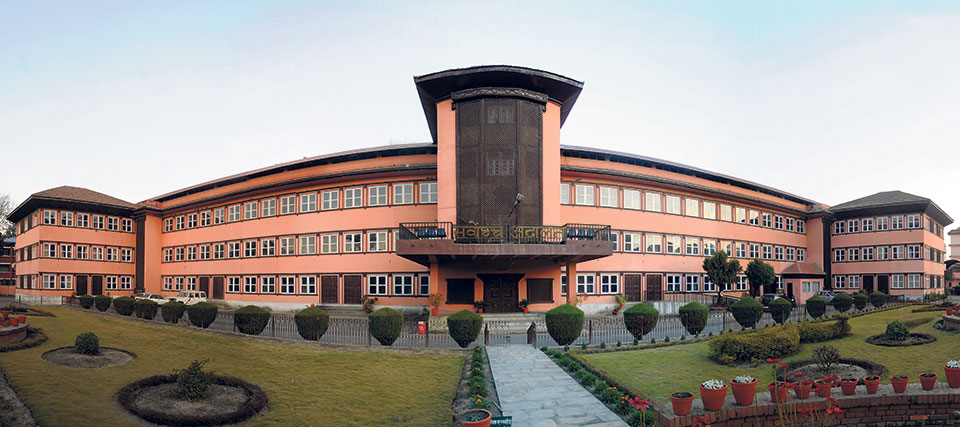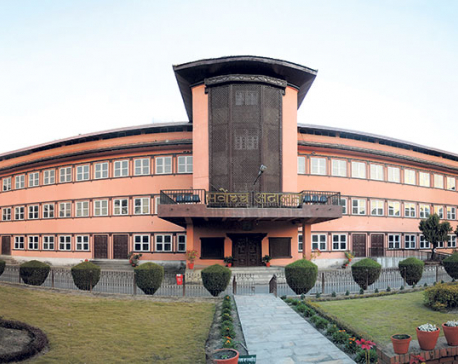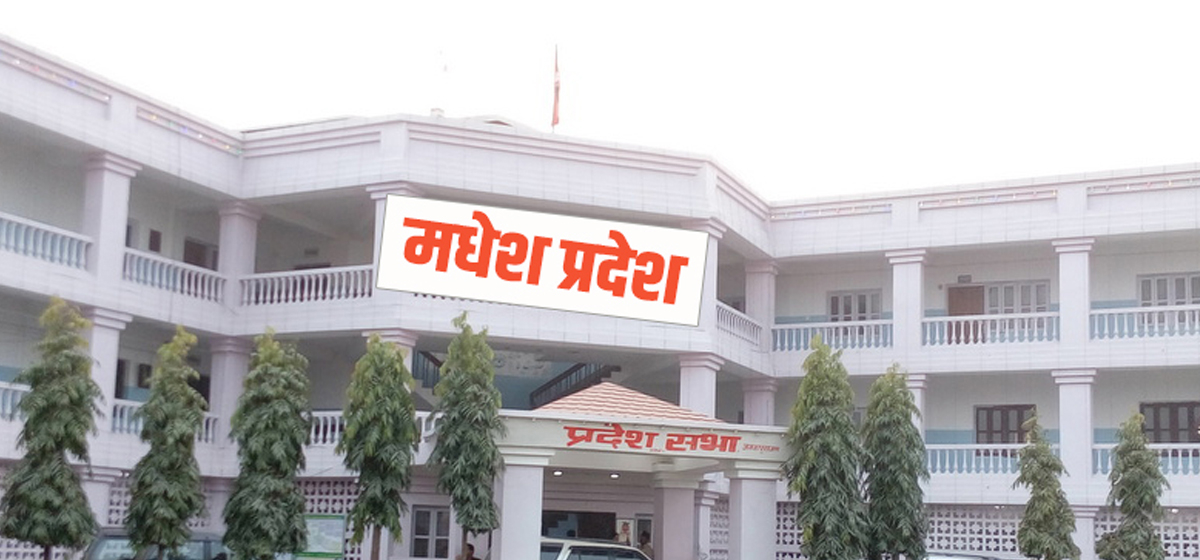
OR
What led to the COVID-19 spread at the Supreme Court?
Published On: October 18, 2020 10:20 AM NPT By: Republica | @RepublicaNepal

KATHMANDU, Oct 18: Most government offices, banks and other institutions have become the COVID-19 hotspots in recent times. The Supreme Court is no exception.
Justices, employees and others in the apex court have already contracted the virus. So far, four lawyers under 50 have succumbed to this deadly disease.
How did this happen? Why could not the justice delivery institutions ensure safety of employees?
Despite the high risk of COVID-19 infections, justices, lawyers and employees are compelled to visit the SC daily where health safety guidelines are often neglected.
“Study on how COVID-19 spread in SC has not been carried out yet but multiple factors may be responsible,” suggested Chandeshwori Shrestha, Chairman of Nepal Bar Association.
First, the documents used in courtrooms go round the detention centers, police offices and canteens. Detention centers and police offices are among the worst hit governmental sectors by COVID-19.
Besides, neglecting, even not complying with, the health safety protocols during the investigation of cases by investigative units has added to the possibility of faster infection at the SC.
The use of common vehicles by the employees and congested working rooms in the SC is another contributing factor.
Third, the documents and other stuff brought to the courtroom from prisons and police offices are most likely to spread COVID-19 in the courtroom.
According to the World Health Organization, the virus can remain active for up to 72 hours on plastic and stainless steel, up to four hours on copper, and up to 24 hours on cardboard.
The SC has already postponed most hearings and writs before Dashain and Tihar vacations due to COVID-19 infections in most of its employees.
You May Like This

31 staffers including a justice of SC contract COVID-19, apex court to hear only six types of cases from tomorrow
KATHMANDU, Jan 18: Thirty one staffers including a justice of the Supreme Court have contracted COVID-19. ... Read More...

SC orders govt to publicize details of relief distributed to people during lockdown
KATHMANDU, July 9: The Supreme Court (SC) on Thursday ordered the government to publicize the details of relief provided to... Read More...

SC refuses to issue interim order on repatriating stranded Nepali
KATHMANDU, April 2: The Supreme Court has refused to issue a directive to repatriate Nepali citizens stranded beyond the Mahakali... Read More...






Just In
- Russia warns NATO nuclear facilities in Poland could become military target
- 16th Five Year Plan: Govt unveils 40 goals for prosperity (with full list)
- SC hearing on fake Bhutanese refugees case involving ex-deputy PM Rayamajhi today
- Clash erupts between police and agitating locals in Dhanusha, nine tear gas shells fired
- Abducted Mishra rescued after eight hours, six arrested
- Forest fire destroys 13 houses in Khotang
- First meeting of Nepal-China aid projects concludes
- Lungeli appointed as Minister for Labor and Transport in Madhesh province govt












Leave A Comment